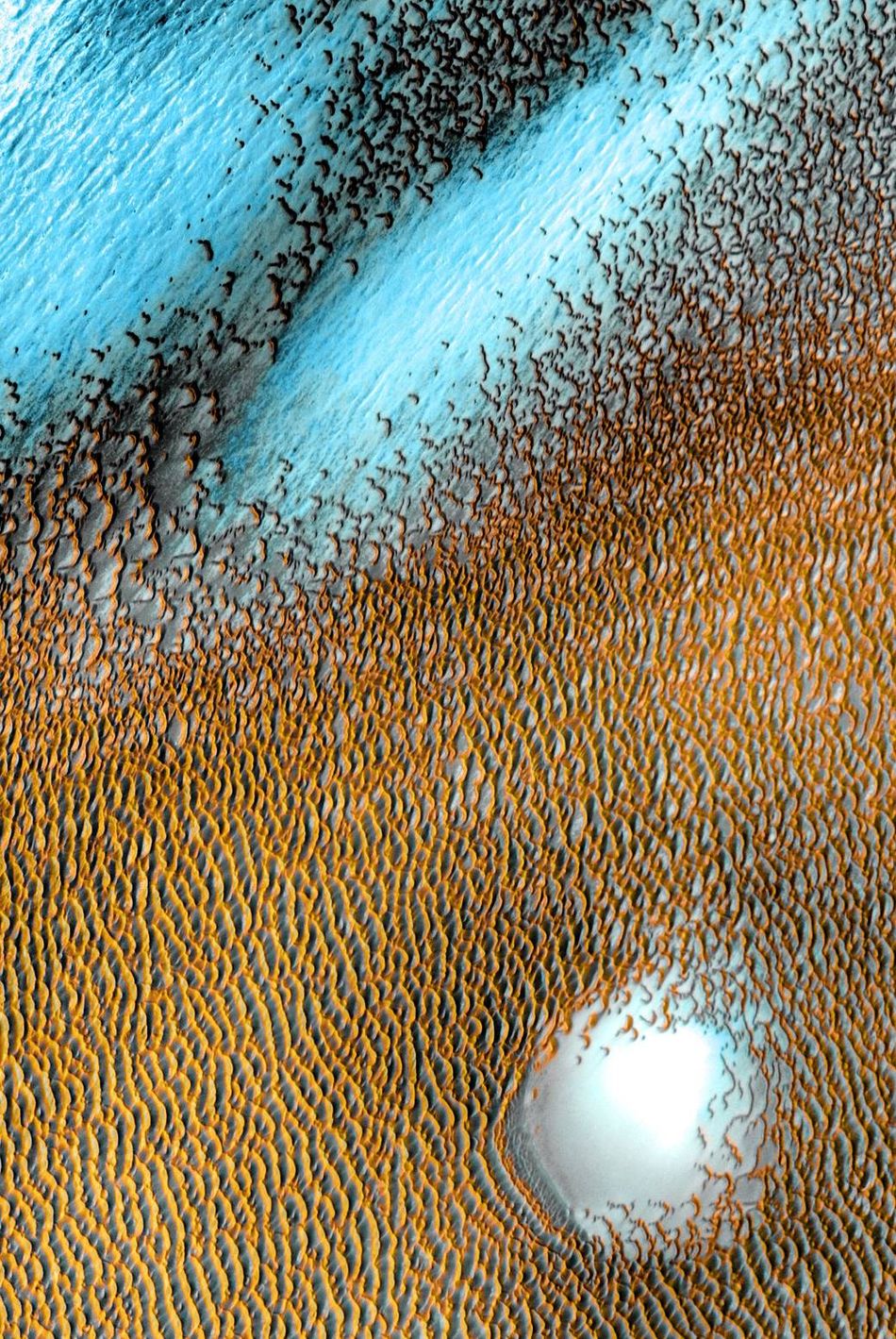You’ve likely heard of blue moons, but have you heard of blue dunes? Specifically, blues dunes on Mars.
If not, have no fear. NASA’s got you covered.
On Thursday, the U.S. space agency released a breathtakingly beautiful photo alongside a post titled, “Blue Dunes on the Red Planet.”
As noted in the post, the dunes surround Mars’ northern polar cap and were created by gusts of wind. The image below shows an area (80.3 degrees north latitude, 172.1 degrees east longitude) that’s 19 miles wide — though the dunes reportedly cover an area as large as the state of Texas.
This particular scene was taken with the infrared camera of the Mars Odyssey orbiter, called the Thermal Emission Imaging System (THEMIS).
One of the most striking aspects of the photo is the vivid coloring seen throughout the dunes. As NASA described, the varying colors in this false-color image correspond with different dune temperatures.
The orangey, yellow-ish dunes, which have massive coral reef energy, signify warmer temperatures. And the blue areas seen in the upper lefthand corner of the image, which resemble dreamy lagoons or blankets of snow, have cooler temperatures.

Dunes captured by the infrared camera of the Mars Odyssey orbiter.
Image: NASA / JPL-Caltech / ASU
As NASA explained in another post, the THEMIS “measures the surface temperature day and night, allowing scientists to determine what physical materials, such as rock, sand, or dust, exist. Its data reveals the presence of these materials based on how they heat up or cool down over the course of a Martian day.”
The post goes on to note that in addition to helping scientists create maps of Mars, the THEMIS allows them to identify the presence of everything from sandstone to salts. Laura Kerber of NASA’s Jet Propulsion Laboratory, who works as Odyssey’s deputy project scientist, was quoted saying, “It’s hard to overstate how the THEMIS global map has filled gaps in our knowledge.”
The blue dunes photo above combines images taken from the orbiter during Dec. 2002 and Nov. 2004. It’s just one of a historic collection of images compiled to celebrate the Odyssey’s 20th anniversary.
The Odyssey launched from Florida’s Cape Canaveral Air Force Station on April 7, 2001, and it entered the Mars orbit that October. It remains in orbit 19-plus years later, which makes it the longest-working Mars spacecraft in history.
